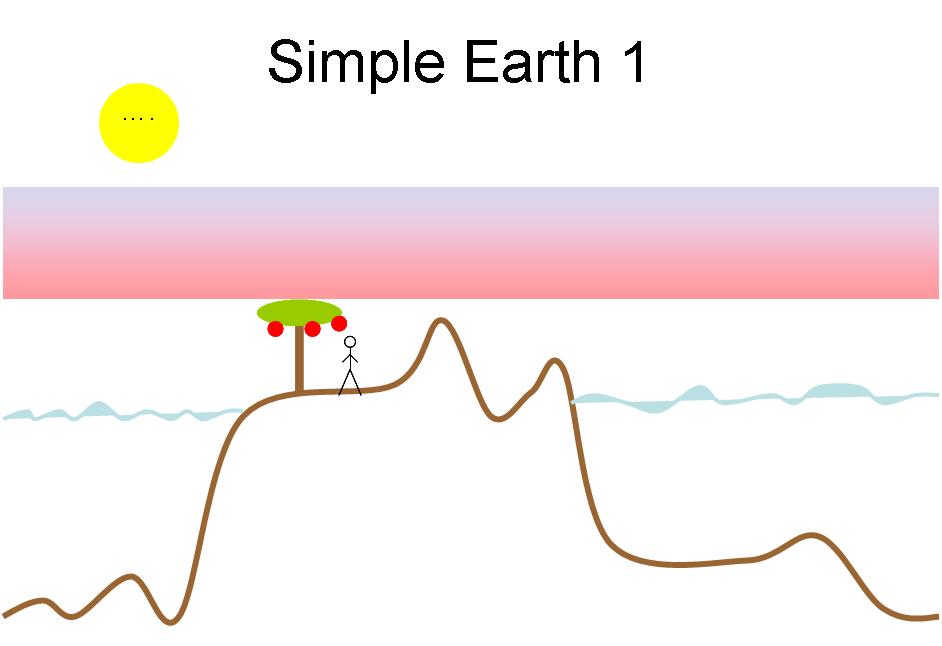Point of View:
This is a series of articles on models. In this series, I am trying to develop a way to build a foundation for non-scientists to feel comfortable about models and their use in scientific investigation.
Doing Science with Models 1.4: In the previous entry of this series I used the example of balancing a monthly checking account to make the point that studying the Earth’s climate is very much like balancing a budget. Rather than money, we calculate a budget of energy.
Energy is one of the attributes used by scientists to describe the physical world, and it is a basic law of classical physics that energy is conserved. There are the laws of conservation of energy, conservation of mass, and conservation of momentum. Momentum describes how an object is moving: its mass, its speed, and its direction.
I introduced the concept of making a mathematical representation of the real world with this equation for money
Today’s Money = Yesterday’s Money + Money I Get – Money I Spend
and I came to point where I said we have a similar equation for energy
Earth’s Energy Today = Earth’s Energy Yesterday + Energy Gained – Energy Lost
These equations are the most basic models for the process that they describe. In fact, these equations could be said to be the perfect model for your personal budget of money or the Earth’s budget of energy. In the jargon of the scientist who builds models, this perfect model is often called the “analytic” model because it can be solved exactly, or analytically, by arithmetic.
The next idea I want to introduce is point of view. In the first instance, above, the equation represents a personal budget. In the second instance, the equation represents the energy budget of the whole Earth. Recall in the previous entry when I set up the problem of looking at the Earth’s energy, I said to imagine a person not on Earth, but who is observing the Earth. The observer, perhaps on Mars, sees the Earth as a small dot with energy coming in from the Sun, which the Earth then emits back to space from the Earth. If the Earth is in an energy balance, then the amount on energy coming back to space equals that coming in from the Sun.
That’s interesting to think about for a minute. Let’s assume that the Sun is constant. Then if the Earth is in an energy balance, the energy coming back to space is the same no matter the amount of carbon dioxide in the atmosphere. So to the person on Mars, the Earth would look the same. But the conditions on Earth might be quite different if the atmosphere had 600 rather than 300 molecules of carbon dioxide per every million molecules of air. This is because the point of view that we are interested in is from the surface of the Earth.
In 2010 I had a series of blogs called Bumps and Wiggles (here, go back and give it some “likes”). In the third of that series, I introduced Simple Earth. Here is that figure, which is described more completely in the original blog.

Figure 1: Simple Earth 1: Some basic ingredients of the Earth’s climate.
The problem of climate and climate change is important because of our point of view. If we are to continue to build thriving economies in our societies, we need a stable climate. In this case, stable really means that we know what to expect. Therefore, the climate of the Earth that might be of interest to that person sitting on Mars is not especially relevant to the person sitting on the surface of the Earth. Therefore, we need to think of models that are from the point of view of the person on the surface of the Earth. Again, energy and the law of conservation of energy come to the forefront.
In the figure, if the stick man looks around there is energy everywhere. It comes as heat from the Sun. It comes as wind from the air. It comes as waves from the sea. It comes as food from the land. So the accounting problem becomes more complex. We need the budget of energy for the atmosphere, the oceans, the land, and the glaciers and ice sheets. This energy needs to be balanced with what comes in from the Sun and what goes back to space. It is the same simple-to-conceive classical physics, but since we are in the middle of it all, the problem becomes complex. Still though, it is only a matter of balancing the books.